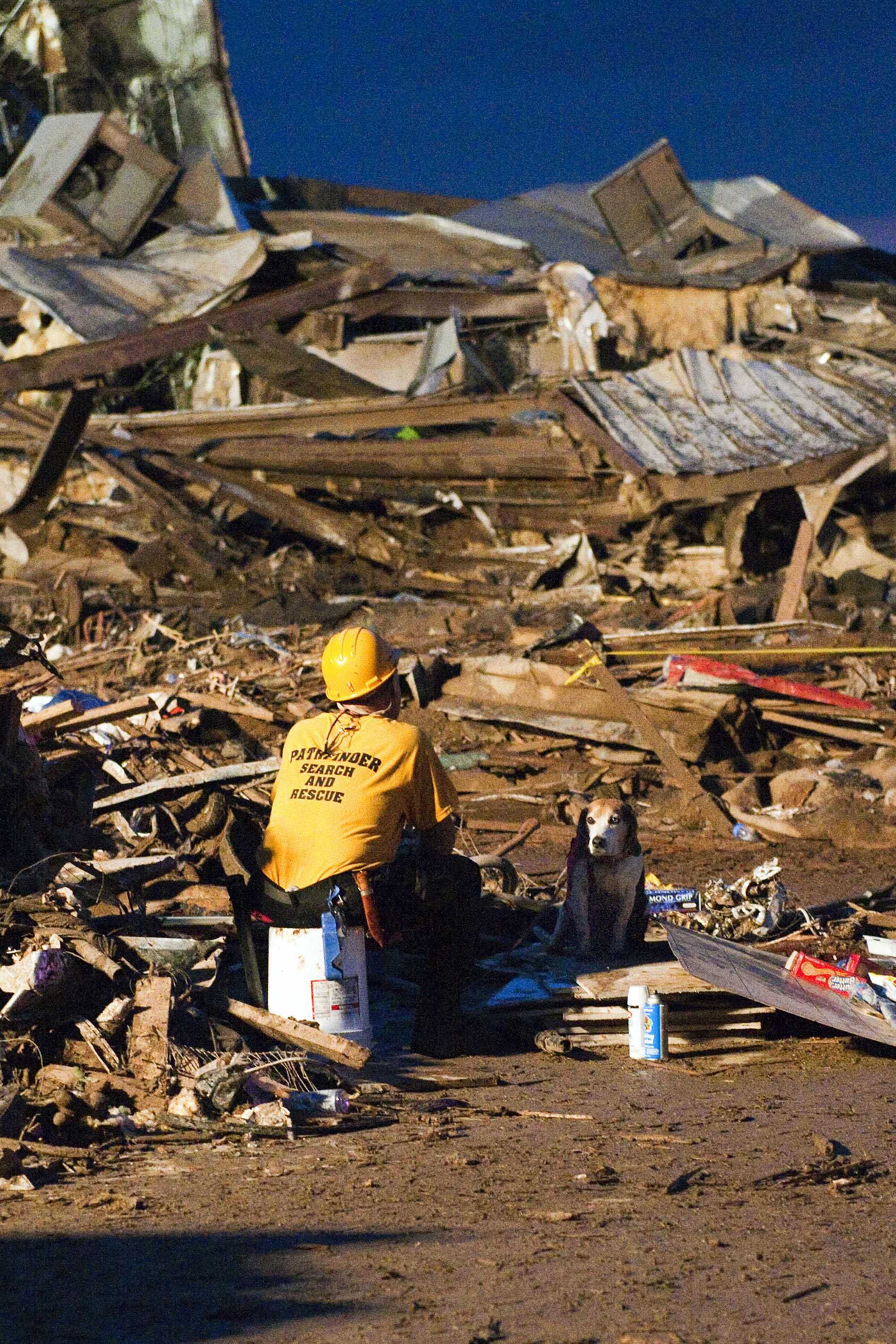Rescue And Clean-Up Workers In Oklahoma Face Environmental Hazards After Tornado
As the residents of Moore, Okla. begin to assess their situations after a tornado ripped through their town, killing at least 24 people and injuring hundreds, rescue workers are beginning recovery and clean-up efforts to dig people and animals out of the rubble and clear away the destroyed homes and buildings left behind by the storm.
But cleaning up after a large-scale disaster like this presents its own perils - the destruction of so many buildings can leave the air toxic and expose people to hazardous materials like asbestos and electrical dangers, among others. The sorts of dangers rescue and clean-up workers face can be seen in the people who helped clear downtown Manhattan of rubble after the September 11, 2001 attacks and those who helped clean up the Gulf of Mexico after the BP Deepwater Horizon oil spill. The Gulf workers are now dealing with a whole host of symptoms and illnesses that they say was caused by the chemicals they were exposed to from the oil spill, reports the Huffington Post. And Ground Zero clean-up workers fought for many years to get compensation and medical care for the variety of illnesses that affected them because of their work.
Now, the Centers for Disease Control and Prevention (CDC) is warning rescue and clean-up workers in Oklahoma of the hazards they face, and is offering advice and resources to help mitigate the dangers. "Emergency-response directors and supervisors should be aware of the potential dangers involved, and should establish and enforce proper safety programs," the CDC says. "Injuries and illnesses in the line of duty are preventable. Workers and volunteers involved with tornado cleanup should be aware of the potential dangers involved, and the proper safety precautions."
Rescue and clean-up workers should watch out for exposure to carbon monoxide and gas fumes, downed electrical wires, fire, injuries that can come from clearing heavy rubble like muscle strain, and cutting injuries from sharp debris, the CDC adds. Further, they should be careful to wear protective equipment and clothing, recognize the symptoms of stress and fatigue, and be careful in the direct handling of human remains.
The town of Niles, Ohio suffered a devastating F5 tornado in 1985 that destroyed most of the town, killed nine people, and injured another 250. The town's website contains some disaster clean-up advice for residents of any town affected by a disaster like the Moore tornado.
The most important thing, the Niles site says, is to let emergency services rescue the trapped and injured. People should also avoid downed power lines, especially near water, make sure there are no gas leaks in the area, check if buildings left standing are structurally sound before entering them, and wear appropriate clothing when walking through rubble, like heavy boots and work gloves.
It's also important, the Niles website adds, to watch out for any animals - especially snakes - that may be wandering around or may have taken shelter in a downed home. And as people go back to their neighborhoods in order to try to recover items, it's important to remember that anything that is recovered must be cleaned, in order to avoid contaminants like sewage, building materials, or farm debris. Food, cosmetics, and medicines should just be thrown out, the Niles site says.


































